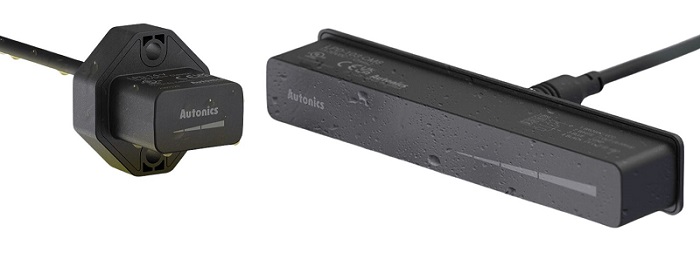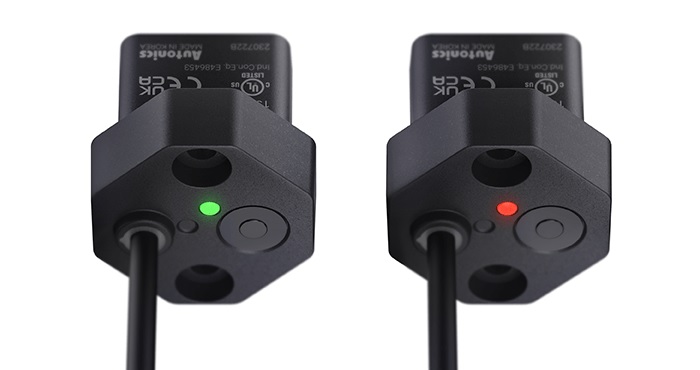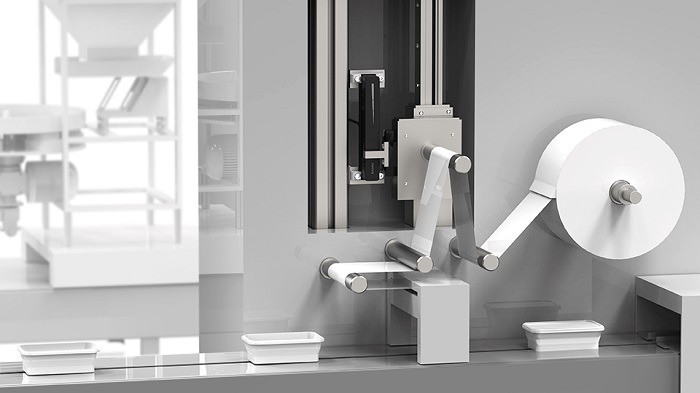Introducing Autonics’ New Series of Linear Position Sensors: The LPD
Measuring the position of objects is commonly done with sensor arrays or linear encoders. The new LPD from Autonics offers a simpler method of position detection with analog and IO-Link connections.
Autonics' cutting-edge linear positioning sensor, the new LPD family, is designed to accurately detect the linear movement and position of metal objects within a range of 14 mm or 103 mm. This advanced sensor is equipped with specialized oil-resistant cable, making it ideal for reliable operation in challenging industrial environments.

The 14 mm (left) and the 103 mm (right) ranges of LPD with oil-resistant and IP67 ratings. Image used courtesy of Autonics
The New Sensor on the Block
Autonics has recently introduced a coreless inductive linear positioning sensor to its range of automation sensors. The LPD series of sensors enables machine builders or automation specialists to precisely detect metal objects within a range of 14 mm or 103 mm. These sensors utilize a coreless inductive proximity sensor technology, where the coils and cores are intricately arranged in an inductive pattern, ensuring highly accurate and reliable results.

The LPD inductive proximity sensors are equipped with red and green indicators to let operators know whether their target is in range (green) or out of range (red). Image used courtesy of Autonics
The LPD series offers a range of models distinguished by either a 14 mm or a 103 mm sensing distance. These sensors are highly durable, boasting an IP67 protection rating for wet or dusty environments, and come with an oil-resistant cable depending on the chosen model. You can select either industrial standard M12, M8, M12 with cable, or pigtail type connections for both the 14 mm and 103 mm models.
Moreover, customers have the flexibility to choose the type of signal they prefer, with options including a 4-20 mA analog signal, a 15-30 V analog signal, IO-Link COM2, or a combination of 15-30 V and a 4-20 mA analog signal. Additionally, with IO-Link, machine builders can conveniently monitor sensor status and configure their sensor remotely.
So Easy, Anyone Can Do It
Setting up the sensors is a straightforward process and can be completed rapidly using the "Teach-IN" button for the current, voltage, and current/voltage combined models. To program the sensor, the operator simply needs to activate the teach mode and instruct the sensor on a "start" position and an "end" position. For the IO-Link communication models, the teaching process is slightly more intricate but involves similar steps, such as defining the "start" and “end” positions. Despite this slight added complexity, even individuals with minimal experience can easily carry out the procedure.

The LPD inductive proximity is being used to monitor the “sag” or tension of the film by monitoring the position of the tensioner. Image used courtesy of Autonics
Ideally, the sensor is used to determine the position of a workpiece, identify the position of a machine, or monitor the position of hydraulic or pneumatic cylinders. In the application shown above, the LPD series sensor is being used to determine the overall tension of the film based on the position of the “sag” of the film. The sensor boasts an impressive 80 µm precision allowing the sensor to be used in tight tolerance applications.
The LPD inductive proximity sensor from Autonics is poised to play a critical role in a variety of industries ranging from manufacturing, packaging, robotics, and many others.

 Facebook
Facebook Google
Google GitHub
GitHub Linkedin
Linkedin








